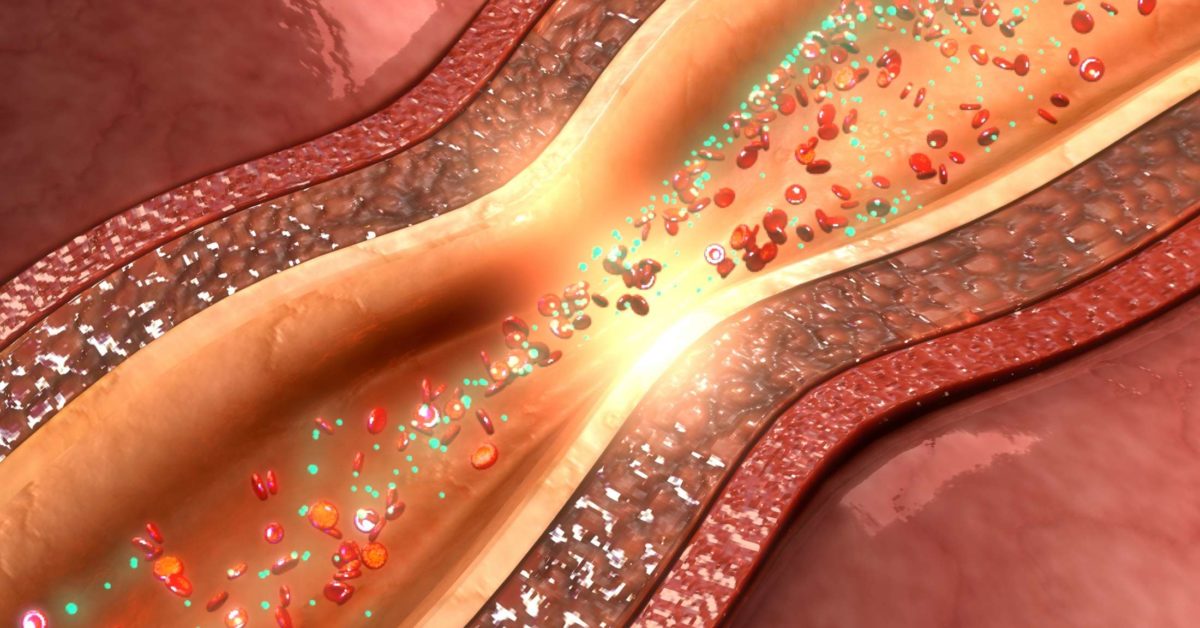The increasing incidence of coronary heart disease (CHD) can be caused by the increasing prevalence of many risk factors, such as diabetes, which is one of the most important risk factors. The prevalence of diabetes is increasing globally, and has reached pandemic levels in the Middle East and around the world. The prevalence of diabetes in patients with coronary heart disease reaches 50% in many countries. Diabetic patients show an increased risk of developing atherosclerosis in CHD for various reasons, including metabolic factors, such as hyperglycemia, dyslipidemia and insulin resistance, leading to endothelial cell dysfunction, vascular smooth muscle dysfunction, impaired platelet function and abnormal coagulation. Diabetic patients tend to exhibit other risk factors for coronary heart disease, such as hypertension and obesity. Diabetics have atherosclerotic plaques, which are more prone to rupture than plaques in non-diabetic patients.
Coronary artery disease is one of the main causes of death from cardiovascular disease, because a heart attack causes atherosclerosis which causes narrowing of blood vessels. Atorvastatin has a pleiotropic effect as an anti-inflammatory through one of the target levels of High Mobility Group Box-1 (HMGB-1). This biomarker is a new biomarker as a marker of coronary heart disease. Research to evaluate the effect of atorvastatin on HMGB-1 biomarkers has never been conducted in Dr Soetomo Hospital. For the time being, the researchers evaluated the effect of atorvastatin on this biomarker in a group of patients with type-2 diabetes and non-diabetics.
Statins are well known for reducing cardiovascular events and mortality in patients with coronary artery disease or who are at high risk of cardiovascular disease. In addition to lowering low-density lipoprotein (LDL)-cholesterol, statins have pleiotropic effects such as improving endothelial function, reducing inflammation, and reducing thrombus formation. Many recent studies have demonstrated the benefits of statins in patients with coronary artery disease (Lim, 2013). Statins have an antiatherosclerosis effect, which is positively correlated with the percentage reduction in LDL cholesterol. In addition, statins exert antiatherosclerotic effects independently of hypolipidemic mechanisms because mevalonate metabolism produces a series of isoprenoids that are vital for differentiating cellular functions from cholesterol synthesis to control of cell growth and differentiation, HMG-CoA reductase inhibition has beneficial pleiotropic effects. Thus, statins significantly reduce coronary events, both in primary and secondary prevention, being the most efficient hypolipidemic compounds that can reduce mortality in coronary patients.
Sampling was carried out by consecutive sampling and obtained a number of 40 patients who were then randomized into two groups of 20 patients each in the group of coronary heart disease patients with type 2 diabetes mellitus and coronary heart patients without type 2 diabetes mellitus. blood at the time of admission to the hospital and when the patient was before KRS, then the serum levels of HMGB1 were measured using the ELISA method and the measurement results were the levels of HMGB1 in units of ng/ml. The research was conducted in May-July 2018.
The results showed that the levels of HMGB-1 after atorvastatin administration in CHD with type-2 diabetes mellitus increased significantly, while in CHD without type-2 diabetes mellitus did not decrease significantly. HMGB-1 levels were not significantly different between the two groups. Longer time and more points for collected samples are needed for further research.
Penulis: Widya Handayani, Suharjono, Mohammad Yogiarto
Link Jurnal: https://www.degruyter.com/document/doi/10.1515/jbcpp-2020-0442/html
Journal Basic Clinical Physiology Pharmacology
Scopus-Q3





